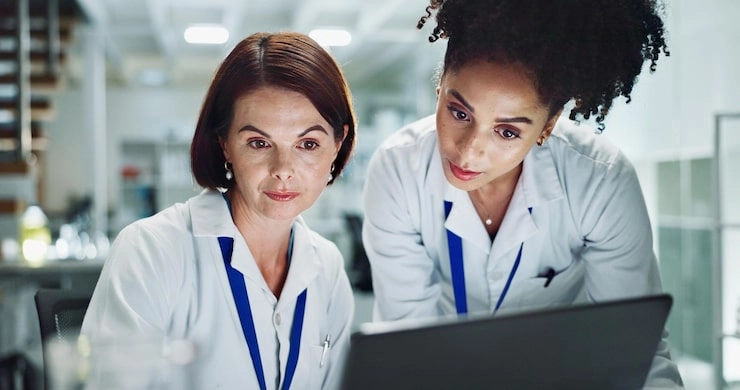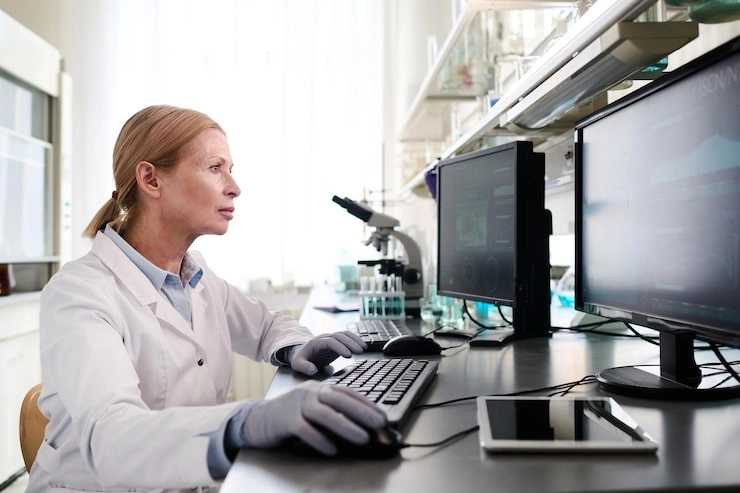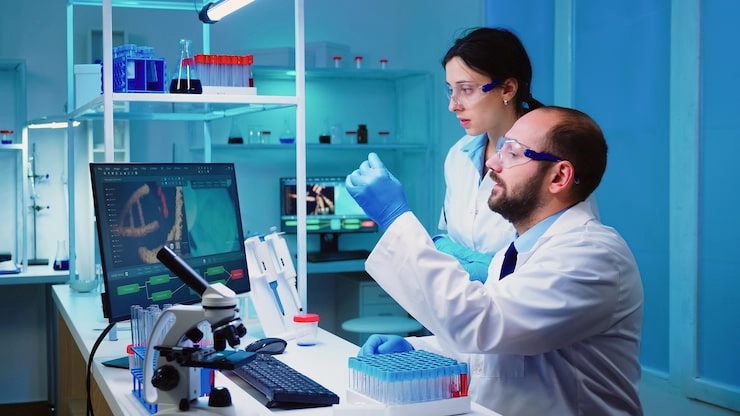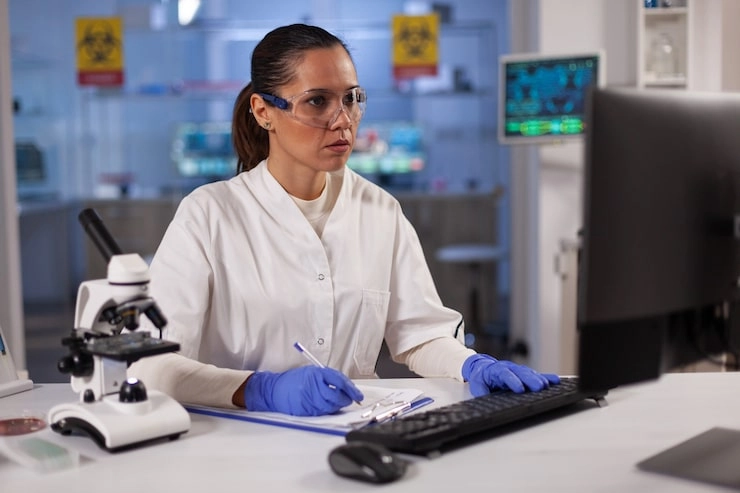
Gas chromatography (GC) is a truly key analytical tool in modern forensic science. What is gas chromatography? “It is a process of separating component(s) from the given crude drug by using a gaseous mobile phase.” It plays a vital role in criminal investigations by separating and analyzing chemical substances from complicated mixtures. This helps a lot. Ultimately, it helps forensic professionals decode important evidence. As forensic labs face growing demands for both accuracy and speed, gas chromatography continues to evolve, and so it remains a completely necessary method in law enforcement and legal proceedings.
The Role of Gas Chromatography in Forensic Science
Gas chromatography is fundamental to forensic science because it can analyze trace substances with great precision.
Overview of Gas Chromatography and Its Scientific Basis
In gas chromatography, the parts of a sample are dissolved in a solvent. Then they get vaporized. This is done to separate the analytes by distributing the sample between two phases: a stationary phase and a mobile phase. The mobile phase is a chemically non-reactive gas that carries the analyte’s molecules through a heated column. To separate compounds in gas-liquid chromatography, a solution sample with interesting organic compounds is injected into the sample port to be vaporized. The compounds then travel. As the vaporized compounds move through the column, their interactions with the stationary phase make them exit at different times—known as retention times—which allows single components to be identified.
Why Gas Chromatography Is Valuable in Criminal Investigations
Gas chromatography gives forensic investigators a few big advantages. Its high resolution is great for detecting tiny amounts of volatile substances. Besides, some of the advantages of chromatography are the range of measurement (from ppm levels up to 100 percent), the detection of a wide range of components, and the repeatability of the measurements. What’s more, GC allows for non-destructive testing. This preserves precious samples for more analyses or for court evidence. Its sensitivity and specificity make it perfect for quickly identifying volatile organic compounds (VOCs), which are often present at crime scenes or in biological samples.
Applications of Gas Chromatography in Forensic Investigations
The flexibility of gas chromatography means it can be used in many areas of forensic analysis.
Toxicology and Drug Detection
One of the most frequent forensic applications is toxicological screening. GC can find drugs, poisons, and alcohol in blood, urine, or saliva. The samples have to be volatile. Luckily, human breath, blood, saliva, and other secretions contain large amounts of organic volatiles that can be easily analyzed using GC. For this reason, it is broadly used in drug overdose investigations and driving under the influence (DUI) cases. By identifying metabolites, analysts can even figure out a subject’s substance use history, giving crucial context during criminal trials.
Fire Debris Analysis and Arson Investigation
GC also works very well in fire investigation. Analysts use it to spot accelerants like gasoline or kerosene from fire residues. This is very helpful. The chemical signature helps tell the difference between accidental fires and arson. Patterns in compound distribution can also help reconstruct the series of events during a fire, thus making it a strong tool for arson investigation.
Explosives and Chemical Warfare Agents Detection
Another key application is finding explosives and chemical agents. Gas chromatography identifies trace explosive residues on bomb fragments or a suspect’s things. When it’s paired with mass spectrometry (GC-MS), it gives even better selectivity and sensitivity. In a GC/MS system, the mass spectrometer scans the masses all the time throughout the separation. This pairing is essential in counter-terrorism investigations where being accurate is everything.
Analysis of Inks, Paints, and Fibers in Trace Evidence
In cases that involve document forgery or vandalism, GC analyzes ink composition to find sources. In a similar way, paint chips found at hit-and-run scenes can be chemically matched to certain vehicles. Fiber analysis using GC also helps to link suspects to crime scenes based on their clothing or upholstery materials.
Forensic Entomology and Decomposition Studies
GC can measure volatile compounds that are released when a body decomposes. This helps forensic entomologists. They can better estimate post-mortem intervals (PMI). Insects feeding on decomposing tissue give off specific VOCs that GC can analyze to build a more solid timeline of death.
Integration with Other Analytical Techniques for Enhanced Accuracy
To get better accuracy and do more, gas chromatography is often combined with advanced detectors.
Coupling GC with Mass Spectrometry (GC-MS)
GC-MS is one of the most powerful mixes in forensic chemistry. The sample is then ionized and broken up, usually by an electron-impact ion source. During this process, energetic electrons bombard the sample. This ionizes the molecule by making it lose an electron because of electrostatic repulsion. The ions are then sent into a mass analyzer where they are sorted by their m/z value, or mass-to-charge ratio. GC identifies when a compound elutes; MS identifies what it is based on that ratio. This double-check system improves reliability and reduces false positives—so it has become a go-to approach in forensic laboratories.
Combining GC with Flame Ionization Detection (FID) or Electron Capture Detection (ECD)
GC-FID is very good at analyzing hydrocarbons, which are common in arson and toxicology cases. FID is the best choice because of its sensitivity and resolution. It can also detect very small molecules. On the other hand, ECD is amazing at detecting halogenated compounds like pesticides or nerve agents because of its incredible sensitivity. These detectors round out GC’s abilities by targeting specific compound types with better performance.
Advantages and Limitations of Gas Chromatography in Forensics
While GC has many good points, understanding its limits is important for correct interpretation.
Key Benefits for Criminal Investigations
Gas chromatography offers quick processing times. This is huge. Decisions need to be made fast during criminal investigations. Its high resolution allows for exact separation even when sample sizes are extremely small. Chromatography is used in the laboratory, in permanently installed online systems, and in the field with portable systems.
Challenges and Considerations in Forensic Applications
Despite its strengths, GC needs skilled people to operate it and understand the results. Many forensic samples are not naturally volatile. They must go through derivatization to make them ready for GC analysis. Also, because it is not suited for detecting semi-volatile compounds, GC might miss evidence unless it’s prepared right or paired with the right detectors.
PERSEE: A Trusted Manufacturer of Analytical Instruments
For forensic labs that need dependable gas chromatographic equipment, Persee is a top manufacturer.
Commitment to Innovation and Precision in Analytical Technology
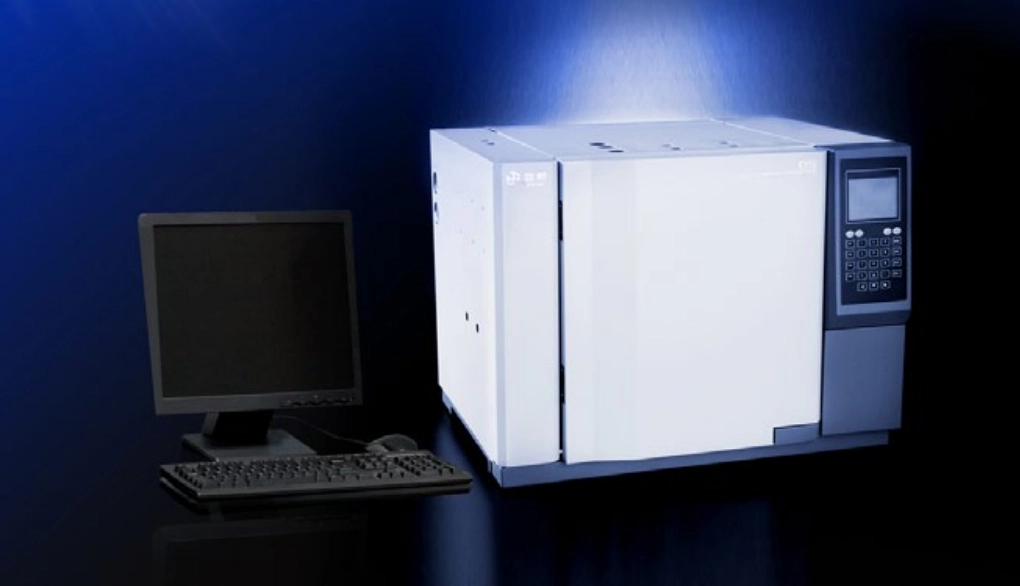
PERSEE provides cutting-edge systems like the G5 GC Und M7 series, which are designed for forensic uses. These instruments are built for accuracy, stability, and are simple to use. They are great for complex evidence analysis. With strong R&D capabilities and a worldwide support network, PERSEE helps laboratories all over the globe perform high-quality forensic investigations with confidence.
Summary of Gas Chromatography’s Impact on Forensics
Gas chromatography has become a vital part of forensic science. It offers precise, repeatable chemical analysis across many investigative fields. Chromatograph columns separate the gas mixture into its single components using some physical characteristic. By integrating with other technologies like mass spectrometry or FID/ECD detectors, its scope just keeps growing—making it one of the most reliable tools in modern criminal justice systems.
FAQs:
Q1: Can gas chromatography detect all types of drugs?
A1: Gas chromatography works very well for many drugs, especially ones that are volatile. But, nonvolatile substances might need derivatization or to be paired with mass spectrometry for a good detection.
Q2: How long does a typical gas chromatography analysis take?
A2: The time it takes can change depending on how complex the sample is. It is pretty fast. A typical analysis ranges from several minutes to an hour per sample, which is quick compared to other analytical methods.
Q3: Is gas chromatography admissible as evidence in court?
A3: Yes, it is. When the analysis is done following approved methods by qualified staff, GC results are widely accepted as scientific evidence. In fact, they have been used a lot in legal cases.

